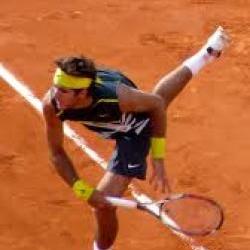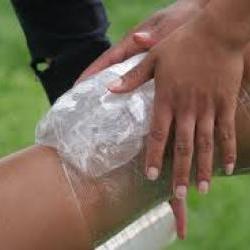Main Menu
Latest Blog Entry
User login
Common Tennis Injuries
Tennis doesn’t have to cause an injury
The demands of tennis mean that all areas of the body are put under repeated pressures and therefore susceptible to injury. Although a non-contact sport, the asymmetrical nature of the sport and need to adapt to the changeable court surfaces will increase the injury risk.
 By the time a junior player has progressed into the elite and professional circuit, it is estimated that he/she will have made approximately 10,000 hits in order to perfect technique. On the other hand, the deconditioned and recreational player is equally prone to problems.
By the time a junior player has progressed into the elite and professional circuit, it is estimated that he/she will have made approximately 10,000 hits in order to perfect technique. On the other hand, the deconditioned and recreational player is equally prone to problems.
Approximately two thirds of tennis injuries are caused by overuse e.g. repeated and explosive serving can cause shoulder pathologies. Continued twists, turns, stops and starts can put intense pressure on the knee joint.
The remaining third of injuries are acute and are normally short term if managed correctly e.g. an ankle or knee ligament sprain.
Preventing Tennis Injury
Conditioning your body in order to prepare for the specific demands of tennis is vital to help prevent injury as well as optimising your sporting performance.
A change of biomechanics and technique can also help to reduce the risk of injury.
FLEXIBILITY
During a match players need to generate extreme force from a variety of positions. Strength through-out an unrestricted range of movement is essential.
STRENGTH AND ENDURANCE
Good muscular endurance ensures that you can apply force over a period of time i.e. that you can still hit the ball as well at the end of a match, as the beginning.
POWER
Upper and lower body power are necessary to create the explosive movements that tennis demands.
AGILITY AND SPEED
The faster you can move around the court, the more time you have to prepare for your shot. This will provide a solid platform from which to hit the ball.
(For more details on how to get fit for Tennis )
Common Injuries in Tennis
SHOULDER
Statistics show that the shoulder is the most commonly structure in professional tennis. Djokovic struggled earlier this year going into the US Open with shoulder pain.
Problems often occur due to the overuse of the rotator cuff muscles which can then cause pathologies such as
- tendonopathy
- impingement
- minor tears
Following initial management to reduce pain and any inflammation, muscle imbalance needs to be addressed.
Corticosteroid injections have been proven effective to settle irritable impingements so that rehabilitation can be progressed. Both the scapular stabilisers and the rotator cuff need to be strengthened for long term improvement.
LOWER BACK
Federer was forced to withdraw from the Qatar Open earlier this year with lower back pain. In tennis, the trunk forms a solid unit which can produce power through rotation of the spine. It transfers the power generated in the legs to the arms, ‘the kinetic link principle’.
The strengthening of trunk / spinal muscles as well as improving flexibility with stretching can help correct any muscle imbalance. Manual Therapy and soft tissue massage can also be helpful as an adjunct to rehabilitation.
KNEE

The patella-femoral joint is at high risk of injury due to the repeated lunging, jumping, change of direction and speed. Nadal continues to struggle with his long standing patella tendonopathy.
Corticosteroid injections around this area can be used in isolation but with caution. A pre-injection U/S scan is often requested to assess tendon quality.
Eccentric strengthening is advocated for this specific diagnosis of ‘jumpers knee’ following acute management.
More acute injuries to the meniscus and ligaments are also prevalent in tennis. Risk can be reduced with ongoing work on strength, flexibility and agility.(More details on Knee injury management here)
ELBOW AND WRIST
‘Tennis Elbow’ is the classic overuse injury to the common extensor tendon at the elbow joint. Similar problems can also occur around the wrist joint specifically. Taping and specific supports can be useful in the short term to help offload the irritated tendons. There is some evidence to support the use of acupuncture.
Eccentric strength work is required in order to achieve a long term recovery.
ANKLE
Acute soft tissue injuries around the ankle are reported frequently in tennis due to failure to meet the specific agility demands of the game. This type of injury is notorious for becoming a recurrent and chronic problem if a graded rehabilitation programme is not followed.
Significant work on progressive proprioceptive exercises is essential. Taping and bracing can be used in the short term but I would not advocate long term use. There is also little evidence to suggest these interventions actually offer any structural support.
Summary of Common Injuries
| Area of Injury | Injury | Cause |
| Upper Body | Tennis Elbow | Overuse |
| Rotator Cuff tendonitis | Repetition of serve | |
| Carpal Tunnel Syndrome | Impingement of medial nerve due to wrist position |
|
| Lower Body | Sprained Ankle | Surface, lack of strength in surrounding muscles |
| Stress Fracture in foot | Overuse | |
| Patella tendonopathy | Repetitive landing | |
| Hamstring strain | Sudden change of direction on tight muscle |
If you would like any more information then please contact me.
Sarah Marshall
Client Testimonials
 Rugby Football League
Rugby Football League
James' knowledge of strength and conditioning has been a valuable resource that I have used to enhance the training programmes at 4 professional Rugby League clubs; Harlequins, St Helens, Whitehaven and Workington. He has had a positive impact on the performance of the athletes and added to the professional development of coaching staff
More


Comments
[…] tennis fitness getting fit to play tennis on clay, essential guide to playing on clay,common tennis injuries and how to prevent them by Physiotherapist Sarah […]
[…] Read our Guide to Tennis Injuries Here […]
[…] (Information on Common tennis injuries and how to prevent them here.) […]